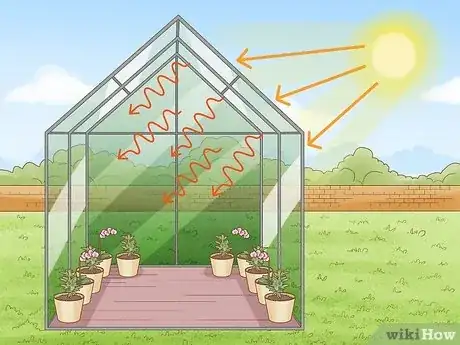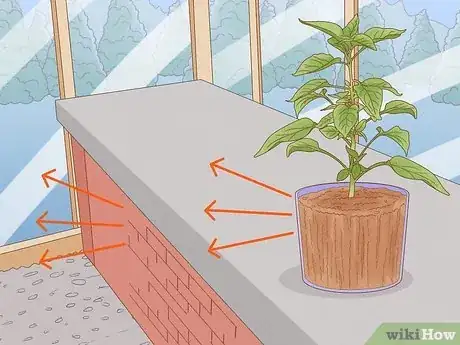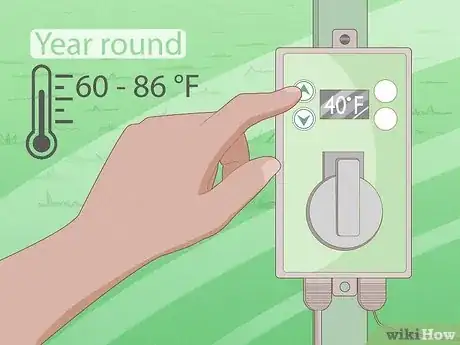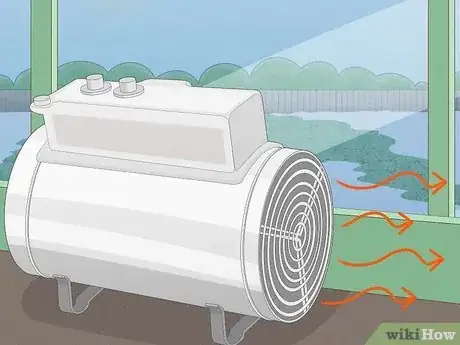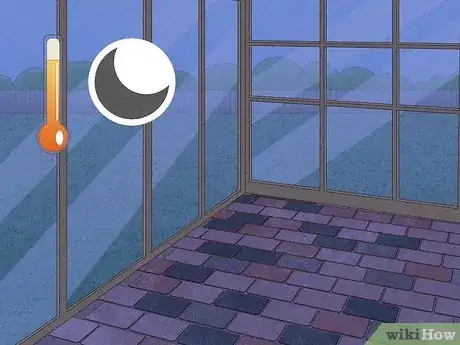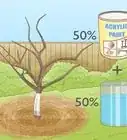This article was co-authored by Jon Rowland and by wikiHow staff writer, Jennifer Mueller, JD. Jon Rowland is a Plant Specialist and the Founder of the Green House Center blog. With over eight years of plant and garden experience, he specializes in greenhouse care, lawn and garden maintenance, and home appliance recommendations. Jon aims to share his knowledge so that others can live a more convenient, efficient, and environmentally friendly lifestyle.
There are 11 references cited in this article, which can be found at the bottom of the page.
This article has been viewed 1,382 times.
Whether you're an avid gardener bracing yourself for winter (or you're just curious about the science!), greenhouses are fascinating—and it makes total sense that you're looking to learn more. Greenhouses work by absorbing light from the sun, which the plants inside convert to heat and release slowly to warm the air around them. This process creates ideal growing conditions for a wide variety of plants, even if there's snow on the ground outside. As a gardener, that means you could potentially grow fresh plants year-round. Intrigued? Read on to learn more about the greenhouse process and how you can use a greenhouse in your own backyard.
Things You Should Know
- Greenhouses absorb light from the sun. The plants inside convert that light to heat and slowly release it to warm the air inside the greenhouse.
- Build your greenhouse in a shady area if your home gets really hot in the summer months. Space heaters can help warm your greenhouse at night during the winter.
- Point your greenhouse toward the equator so it gets maximum sun exposure.
- Use your greenhouse to grow plants year-round or to start plants from seed early.
Steps
How Greenhouses Work
-
1Light enters the greenhouse and is absorbed by plants and other objects. The roof and walls of a greenhouse are made of glass or transparent plastic sheeting that allows sunlight to shine through. The plants you're growing in the greenhouse, as well as any other objects, absorb the light energy.[1]
-
2Plants and other objects convert absorbed light to heat. When you stand outside on a sunny day, you can feel the light of the sun warming your body. The same principle is at work in a greenhouse—the sun's rays are absorbed by the plants and other objects inside, which convert that light energy to heat.[2]Advertisement
-
3Plants and other objects slowly release the energy they've absorbed. When anything is heated by the light of the sun, it takes a long time for it to cool down again—just think about how warm it is inside your car if you leave it parked in the sun. As the plants and other objects in your greenhouse slowly release heat, they continuously warm the air around them.[3]
-
4The heat is trapped in the greenhouse, keeping it warm inside. Because heat energy has a different wavelength than light energy, it can't get through the glass or plastic barrier as easily as it came in. Some heat does escape, so greenhouses do need an alternative heating source in cold months—especially at night. But for the most part, the trapped heat keeps the greenhouse pretty warm.[4]
- Ventilation is necessary in a greenhouse to circulate the air and bring in fresh carbon dioxide, which the plants need, from outside.[5]
Expert Q&A
-
QuestionHow can you make a simple, mini greenhouse at home?
 Jon RowlandJon Rowland is a Plant Specialist and the Founder of the Green House Center blog. With over eight years of plant and garden experience, he specializes in greenhouse care, lawn and garden maintenance, and home appliance recommendations. Jon aims to share his knowledge so that others can live a more convenient, efficient, and environmentally friendly lifestyle.
Jon RowlandJon Rowland is a Plant Specialist and the Founder of the Green House Center blog. With over eight years of plant and garden experience, he specializes in greenhouse care, lawn and garden maintenance, and home appliance recommendations. Jon aims to share his knowledge so that others can live a more convenient, efficient, and environmentally friendly lifestyle.
Plant Specialist A mini greenhouse is a good idea for people with limited space but an enormous love for gardening. There are many small greenhouse packs being sold online. First, measure the place where you are going to install a mini greenhouse. Then, find all the models online that will fit in that space and choose the one you like. Finally, buy it and follow the instructions in the package.
A mini greenhouse is a good idea for people with limited space but an enormous love for gardening. There are many small greenhouse packs being sold online. First, measure the place where you are going to install a mini greenhouse. Then, find all the models online that will fit in that space and choose the one you like. Finally, buy it and follow the instructions in the package.
Warnings
- Make sure any plants you bring into your greenhouse are pest- and disease-free. Any problems will quickly spread and overtake all the other plants.[22]⧼thumbs_response⧽
References
- ↑ http://www.ces.fau.edu/nasa/module-2/how-greenhouse-effect-works.php
- ↑ http://www.ces.fau.edu/nasa/module-2/how-greenhouse-effect-works.php
- ↑ https://climatekids.nasa.gov/greenhouse-effect/
- ↑ https://climatekids.nasa.gov/greenhouse-effect/
- ↑ https://extension.tennessee.edu/publications/documents/pb1068.pdf
- ↑ https://extension.oregonstate.edu/gardening/flowers-shrubs-trees/heat-wave-garden-how-identify-prevent-heat-stress-plants
- ↑ https://extension.tennessee.edu/publications/documents/pb1068.pdf
- ↑ https://cmg.extension.colostate.edu/Gardennotes/723.pdf
- ↑ https://aggie-horticulture.tamu.edu/travis/wp-content/uploads/2016/04/Texas-Master-Gardener-Tips-for-Hobby-Greenhouse-Owners.pdf
- ↑ https://extension.tennessee.edu/publications/documents/pb1068.pdf
- ↑ https://extension.tennessee.edu/publications/documents/pb1068.pdf
- ↑ https://extension.okstate.edu/fact-sheets/the-hobby-greenhouse-2.html
- ↑ https://extension.okstate.edu/fact-sheets/the-hobby-greenhouse-2.html
- ↑ https://extension.okstate.edu/fact-sheets/the-hobby-greenhouse-2.html
- ↑ https://extension.okstate.edu/fact-sheets/the-hobby-greenhouse-2.html
- ↑ https://aggie-horticulture.tamu.edu/travis/wp-content/uploads/2016/04/Texas-Master-Gardener-Tips-for-Hobby-Greenhouse-Owners.pdf
- ↑ https://extension.okstate.edu/fact-sheets/the-hobby-greenhouse-2.html
- ↑ https://extension.unh.edu/resource/very-small-greenhouses-back-yards
- ↑ https://scied.ucar.edu/learning-zone/how-climate-works/greenhouse-effect
- ↑ https://hortphys.uga.edu/research/fertilization-in-greenhouses-an-introduction/
- ↑ https://www.jstor.org/stable/24865238?seq=2#metadata_info_tab_contents
- ↑ https://extension.tennessee.edu/publications/documents/pb1068.pdf
